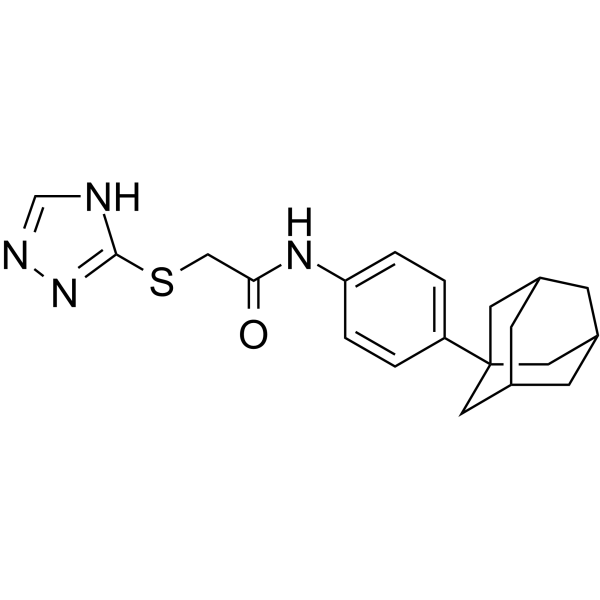| Description |
MGH-CP1 is a potent and orally active TEAD2 and TEAD4 auto-palmitoylation inhibitor with IC50s of 710 nM and 672 nM, respectively. MGH-CP1 can decrease the palmitoylation levels of endogenous or ectopically expressed TEAD proteins in cells. MGH-CP1 can suppress Myc expression, inhibit epithelial over-proliferation, and induce apoptosis when together with Lats1/2 deletion[1].
|
| Related Catalog |
|
| Target |
IC50: 710 nM (TEAD2), 672 nM (TEAD4) [1]
|
| In Vitro |
MGH-CP1 (0-100 μM) inhibits auto-palmitoylation of recombinant TEAD2 and TEAD4 in a dose-dependent manner[1]. MGH-CP1 (0-2 μM) inhibits TEAD-binding sites (TBS)-Luc reporter activity in a dose-dependent manner in YAP-expressing HEK293 cells[1]. MGH-CP1 does not affect YAP nuclear localization or protein levels but potently inhibits TEAD-mediated transcription in a dose-dependent manner and effectively blocks cell over-proliferation[1]. MGH-CP1 can suppress Myc expression, inhibit epithelial over-proliferation, and induce apoptosis when together with Lats1/2 deletion[1].
|
| In Vivo |
MGH-CP1 (75mg/kg; PO; daily, for 2 weeks) inhibits the palmitoylation of TEAD proteins in the intestinal epithelium in wild-type mice, but inhibits upregulation of the TEAD target genes, CTGF and ANKRD1, in Lats1/2 KO mice intestine[1]. Animal Model: Mice (induced high-dose Cre recombination by intraperitoneal injection of 120mg/kg Tamoxifen for two consecutive days)[1] Dosage: 75 mg/kg Administration: PO; daily, for 2 weeks Result: Effectively inhibited the palmitoylation of TEAD proteins in the intestinal epithelium in wild-type mice, but effectively inhibited upregulation of the TEAD target genes, CTGF and ANKRD1, in Lats1/2 KO mice intestine.
|
| References |
[1]. Li Q, Sun Y, Jarugumilli GK, et al. Lats1/2 Sustain Intestinal Stem Cells and Wnt Activation through TEAD-Dependent and Independent Transcription. Cell Stem Cell. 2020;26(5):675-692.e8. doi:10.1016/j.stem.2020.03.002
|


